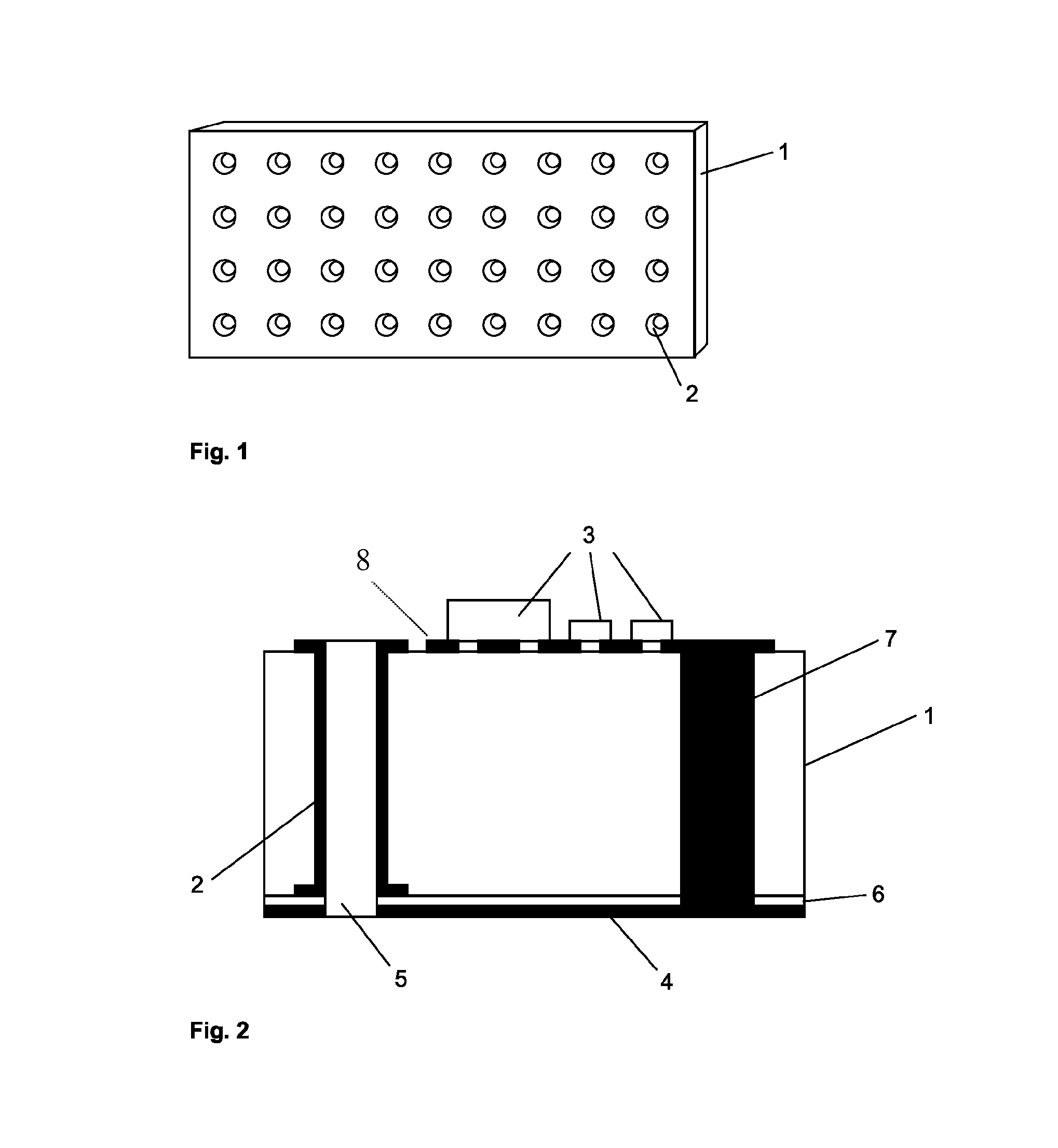Microplasma array
a technology of microplasma and array, which is applied in the direction of nitrogen oxide/oxyacid, nitric oxide, energy-based chemical/physical/physical-chemical processes, etc., can solve the problem that the plasma density of the latex does not meet the coating task, and achieves the effect of improving the ignition behavior of the plasma array and reducing the wear of the electrod
- Summary
- Abstract
- Description
- Claims
- Application Information
AI Technical Summary
Benefits of technology
Problems solved by technology
Method used
Image
Examples
Embodiment Construction
[0030]FIG. 1 shows an overall view of a plasma array according to the invention with 4×9 individual plasma cells, characterized by hollow electrodes 2 formed in a substrate 1.
[0031]FIG. 2 shows a cross sectional view of an individual plasma cell. The hollow electrode 2 is formed by a metallic coating of a microhole made in the substrate 1. Formation of the holes and their coating is done with the well-known methods used in semiconductor technology. On the upper side of substrate 1 the hollow electrode 2 is connected with a freely-oscillating oscillator 3, integrated into substrate 1, which is designed, e.g., with a frequency of 5.8 GHz (ISM-frequency). The arrangement of oscillators 3 directly on the substrate 1 makes the array into a fully-independent component that only requires a voltage source. The power of an individual plasma cell can be limited to less than 10 watts so that plasmas can be formed with very small energy input, which also enables good scalability, as well as the...
PUM
| Property | Measurement | Unit |
|---|---|---|
| diameter | aaaaa | aaaaa |
| frequency | aaaaa | aaaaa |
| voltages | aaaaa | aaaaa |
Abstract
Description
Claims
Application Information
 Login to View More
Login to View More - R&D
- Intellectual Property
- Life Sciences
- Materials
- Tech Scout
- Unparalleled Data Quality
- Higher Quality Content
- 60% Fewer Hallucinations
Browse by: Latest US Patents, China's latest patents, Technical Efficacy Thesaurus, Application Domain, Technology Topic, Popular Technical Reports.
© 2025 PatSnap. All rights reserved.Legal|Privacy policy|Modern Slavery Act Transparency Statement|Sitemap|About US| Contact US: help@patsnap.com


